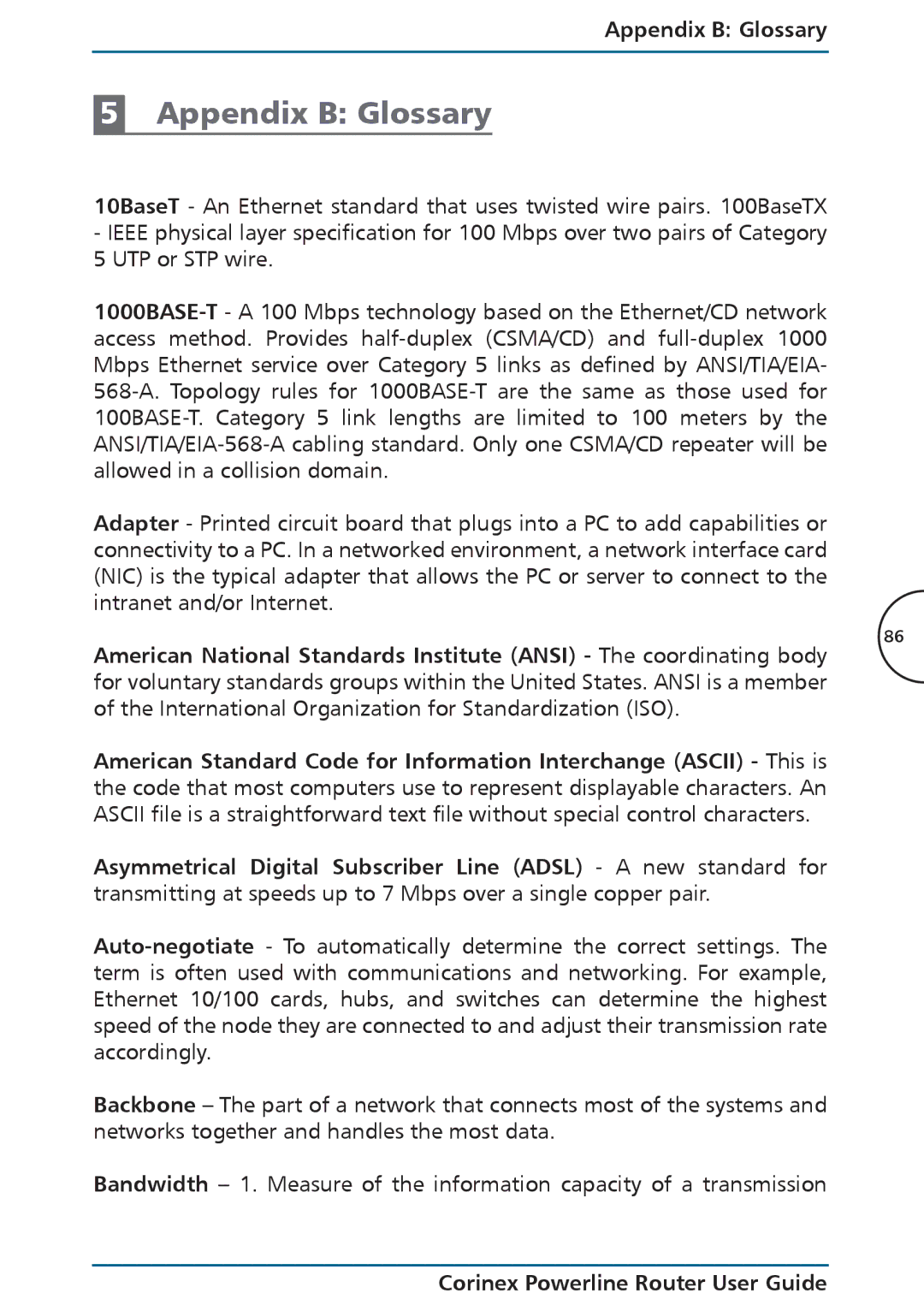
Appendix B: Glossary
5Appendix B: Glossary
10BaseT - An Ethernet standard that uses twisted wire pairs. 100BaseTX
-IEEE physical layer specification for 100 Mbps over two pairs of Category
5 UTP or STP wire.
Adapter - Printed circuit board that plugs into a PC to add capabilities or connectivity to a PC. In a networked environment, a network interface card (NIC) is the typical adapter that allows the PC or server to connect to the intranet and/or Internet.
American National Standards Institute (ANSI) - The coordinating body for voluntary standards groups within the United States. ANSI is a member of the International Organization for Standardization (ISO).
American Standard Code for Information Interchange (ASCII) - This is the code that most computers use to represent displayable characters. An ASCII file is a straightforward text file without special control characters.
Asymmetrical Digital Subscriber Line (ADSL) - A new standard for transmitting at speeds up to 7 Mbps over a single copper pair.
86
Backbone – The part of a network that connects most of the systems and networks together and handles the most data.
Bandwidth – 1. Measure of the information capacity of a transmission
